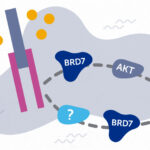Exploring targeted treatments for children with low-grade brain tumors

Children diagnosed with low-grade astrocytomas, the most common type of pediatric brain tumor, have close to 90 percent overall survival rates. However, the growth of the tumors, as well as the standard treatments (neurosurgery and chemotherapy) required to control them, can cause serious side effects, including damaging developing brains and bodies.
Researchers at Dana-Farber/Boston Children’s Cancer and Blood Disorders Center recently led an in-depth exploration into the genetic makeup of the individual brain tumor cells with the hope that the findings will lead to new treatments to minimize or avoid ill effects for young patients, according to Pratiti (Mimi) Bandopadhayay, MBBS, PhD, neuro-oncologist at Dana-Farber/Boston Children’s and director of the Pediatric Low-Grade Astrocytoma (PLGA) Program, which aims to find more effective treatments for low-grade glioma patients.
Using single-cell sequencing to characterize children’s brain tumors
A study conducted by Bandopadhayay and her colleagues of pilocytic astrocytoma (the formal name for the disease, which is a type of glioma) appeared online today in Nature Communications. The study used single-cell RNA sequencing (a process that allows individual cells to be analyzed) to “read” each cell’s activity and makeup. This enabled the researchers to compare the specific profiles of low-grade pilocytic astrocytoma to the makeup of normal cells and to identify the molecular changes that occur in the cancer.
“One of the things that informed our research is that low-grade astrocytomas stop growing when children reach their 20s. This fact spurred us to explore the cellular programs that signal tumors to grow to help us understand how these may be affected as children get older with the hope that we may one day take advantage of these processes in new treatments,” says Rameen Beroukhim, MD, PhD, of the Dana-Farber Cancer Institute, who is co-senior author on the study with Bandopadhayay. First authors of the manuscript also from the Dana-Farber Cancer Institute include Zachary Reitman and Brenton Paolella.
Lessons learned from individual cells
“When we study tumor samples cell by cell, our findings show that even when cancer cells develop a mutation, they occupy a range of cell states seen in normal development — states that can change as children age,” Beroukhim says. “We also found that only some of the cells occupy cell states that allow them to divide, and the mutations that cause the cancers to grow are most active in these cells,” he adds.
What this suggests, then, is that researchers should focus efforts to treat the cancer-causing mutations specifically in this cell population. For example, they might use doses of targeted inhibitors that can prevent growth of these cells but that do not cause side effects in normal cells.
Families unite to fund research efforts
A major funder and driver of this research initiative — and of many other research projects focused on low-grade astrocytomas — is the Pediatric Low-Grade Astrocytoma Fund at the Pediatric Brain Tumor Foundation, started more than a decade ago by four families who each had a child or young relative diagnosed with a low-grade astrocytoma.
“Our first project was raising money in 2007 to help launch the PLGA Program, which is exclusively focused on low-grade astrocytomas,” says Amy Weinstein, who was a founding member and Executive Director of the foundation when it began until the organization merged with the Pediatric Brain Tumor Foundation in 2019 and her role changed to Director of PLGA Research and Advocacy. The money raised by the foundation for the PLGA Program supports children receiving care from Dana-Farber/Boston Children’s.
Tapping into a growing trend
The latest study builds on the findings of several other recent studies that have also utilized single-cell RNA sequencing to unravel the biology of pediatric tumor cells in order to determine more effective ways to treat them, particularly in children who have become resistant to common treatment methods. While the earlier studies focused on devastating pediatric gliomas, namely glioblastoma and DIPG, the newest effort is the first to analyze low-grade gliomas cell by cell, Beroukhim says.
Putting research into action
“Back when the foundation began, no research was being done to find more effective treatments for this disease, so children with this diagnosis had very few options,” says Weinstein.
Today, this is no longer the case. The wealth of research findings has already led to several clinical trials that are testing the first targeted therapies for low-grade gliomas in children. While these efforts are still in the early stages, Bandopadhayay says that the results seem promising so far and may in the not-too-distant future lead to improved outcomes for children and families.
Find out more about PLGA brain tumor trials.
Related Posts :
-

BRD7 research points to alternative insulin signaling pathway
Bromodomain-containing protein 7 (BRD7) was initially identified as a tumor suppressor, but further research has shown it has a broader role ...
-

Exposing a tumor’s antigens to enhance immunotherapy
Successful immunotherapy for cancer involves activating a person’s own T cells to attack the tumor. But some tumors have ...
-

Combining CAR-T cells and inhibitor drugs for high-risk neuroblastoma
Chimeric antigen receptor (CAR)-T cell therapy is a potent emerging weapon against cancer, altering patients’ T cells so they ...
-

When diagnosis is just the first step: The Brain Gene Registry
Through advances in genetic sequencing, many children with rare, unidentified neurodevelopmental disorders are finally having their mysteries solved. But are ...





